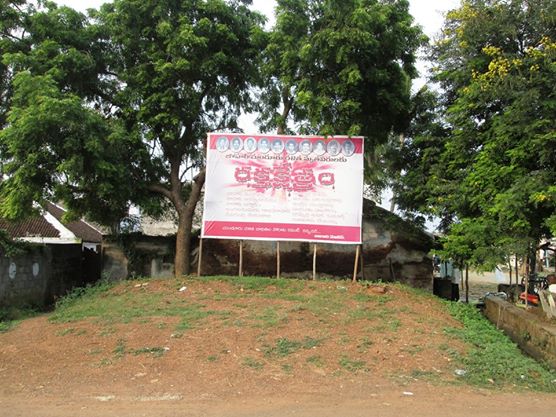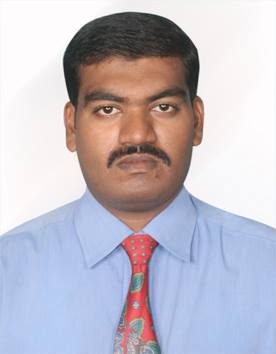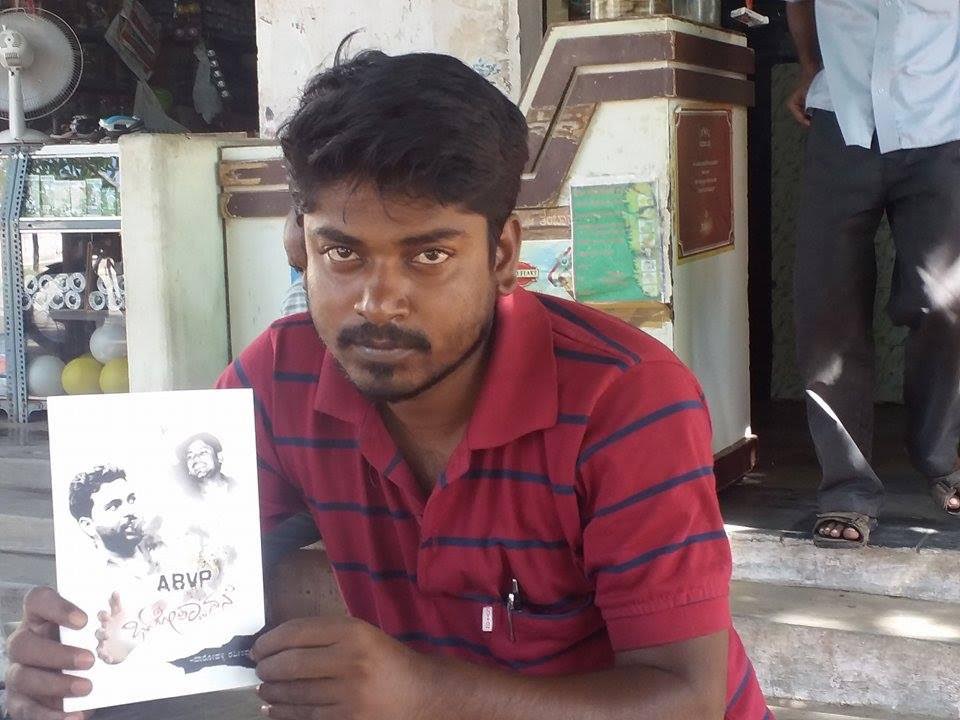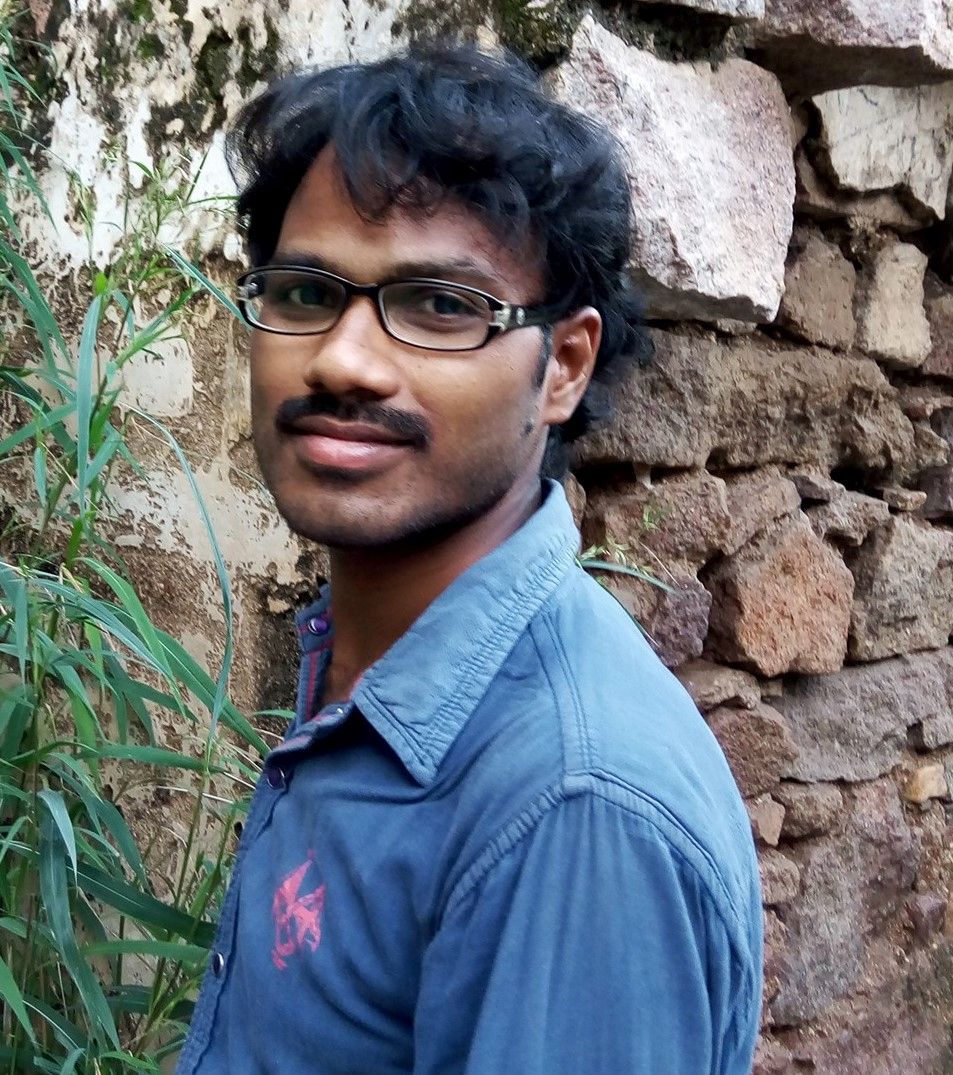Duddu Prabhakar
On August 6 of 1991, around 11 am in the morning the high caste mob of Reddy’s and Kapu’s from Tsundur, Valiveru, Modukuru and Munnangi Vari Palem, with the help of police pursued and hacked to death Dalits from Tsundur. After four days, 8 corpses (7 Malas, 1 Madiga) were recovered from the Tungabhadra canal. They were bodies of Jalaadi Mattaiah, Jalaadi Immanuel, Jalaadi Issaku, Mallela Subbarao, Mandru Ramesh, Devarapalli Jayaraj, Sankuru Samsonu, and Angalakuduru Rajmohan. The corpses were highly decomposed. On seeing the state of his brother’s corpse Mandru Parishuddharao died of shock and grief. The police, in a dastardly incident, killed Kommerla Anil Kumar, the eyewitness who was on a hunger strike to demand the immediate arrest of the killers. At the same time Guduru Leyamma, while participating in a Chalo Delhi programme, was killed in a hit and run incident in Delhi, while she was crossing the road.

‘Raktakshetram’, the place where nine of the martyrs were buried, right in the heart of the village to serve as a constant reminder
This atrocity occurred during the Chief Ministership of Nedurumalli Janardhan Reddy. These killings had the full backing of Mysoora Reddy who was the then home minister. These murderous mobs, high on their caste chauvinistic attitude and backed by the state machinery, went on a rampage and killed innocent and unassuming civilians. And for 16 years, the Tsundur Massacre case lay dormant till 2007. On June 31st, 2007, the Tsundur special court delivered its judgement. It ordered life imprisonment for 21 people and one year jail term for 35 people.
But the recent judgment of the high court bench consisting of Justice L. Narsimha Reddy and Justice MSK Jaiswal on 22nd of April, 2014 released all the criminals and pronounced them innocent. If these 56 accused are declared innocent, then who were the people who killed those innocent Dalits? Stabbed them, hacked them and packed the parts in gunny sacks and threw them into the Tungabhadra canal? We proudly boast of our country being not just secular but also the world’s largest democracy. The question that every suppressed and oppressed caste and class in this country asks is: if they were innocent, then who were the real killers? By this judgement the Dalits and minorities of this country believe that it is not the law but Manusmriti that is operating.
Till this time even after repeated incidents where the courts sided with the rulers and oppressors, we still to some extent believed in the judiciary. When the courts of the land deny us justice and side with the accused killers, the Dalits already dissatisfied and living under the fear of another massacre can no longer trust in the due process of law or democracy. It is up to the common people and intelligentsia of this country to oppose this judgement and spread awareness of this unjust judgement.
Role of the Police
By 6th of August, 1991, the Dalits of Tsundur were already facing a social boycott for three months, a heinous practice which not only hinders their life but also denigrates them for their caste. Even the presence of a police picket in the village had not hindered the day to day attacks on the Dalits.
On that fateful day policemen, who were more than 100 in number, came to the Dalit hamlet and drove them out saying “Reddy’s and Kapus are preparing to attack you with lethal weapons. We don’t have the force to stop them. Run and save your lives.” This spread a panic among the Dalits and they were directed to run towards the paddy fields to escape but were picked up and hacked to death by the waiting upper caste mob. This underhand behaviour of the police was not questioned by the media. Further they brutally shot the only eye witness, Kommerla Anil Kumar, to death when he was on a peaceful dharna.
Until now the police have protected some accused who were directly involved in the conspiracy to kill the Dalits of Tsundur by offering flimsy technical reasons. All the accused are from high castes and were directly involved in the killings of Dalits. The police intentionally prepared a charge sheet full of loopholes which some of the accused fully manipulated to get acquitted in the lower court itself. Throughout the length of the case, in the special court, the police did everything to obstruct it and hinder the work of the special public prosecutor B.Chandra Sekhar and A.P.P. Sivanageswara Rao.
High Court’s Procrastination
The Tsundur Dalit massacre case has become notorious throughout the country. The accused with the help of the state machinery (Police) and the courts have successfully obstructed and denied justice to the Dalits of Tsundur for almost 14 years. Citing that the murdered Dalits were converted Christians, the accused argued that they are not SC’s but OBC’s and as such the case against them cannot come under the SC/ST (Prevention of Atrocities) Act. And they got a stay from the high court which prevented the case from being prosecuted in the Tsundur special court. Further, the high court sent summons to the witnesses in the case to appear at SC/ST fast track court at Guntur. The Dalits of Tsundur vehemently opposed this and demanded that the Government fulfil its assurance of prosecuting the case at the special court to be established in Tsundur. Only then did the Government establish the special court at Tsundur.
But the accused citing danger to their lives got a stay from the high court once again. They also accused the public prosecutor of links with Naxalites and demanded that they be removed from the case. In this way the accused used all the loopholes created by the state machinery and roamed free for 13 years. In 2004 on December 1st at last the court in Tsundur started the trial. The accused once again went to the high court even during the trial period and examination of witnesses. Realising that Justice Prabhakar Rao was appointed a Special Judge, the accused went to high court saying that since Prabhakar Rao is a Dalit, he will be biased towards Dalits, so they won’t get justice. And they successfully appealed to change the judge. As a result, just after examining 10 witnesses, Prabhakar Rao went on a transfer.
Judgment in the Special Court
Police had filed charge sheet against 219 people, of whom 7 were not even arrested. By the time the trial started 23 had already died. Enquiry was conducted on the rest 189. On the whole 79 witnesses were examined. On July 31, 2007 Justice Anees delivered the judgment. Only 21 were sentenced to life imprisonment while 35 were sentenced to one year imprisonment. Since these 35 were recognised as members of the mob and had attacked with lethal weapons, they had to be awarded life imprisonment under 302 read with 149 IPC. In addition, even though there were evidences and witnesses against another 60, they were acquitted. Most worrying fact was that although the trial and entire court proceedings took place under SC/ST (Prevention of Atrocities) Act, the judgement was delivered under 302 IPC. The special court did not recognise this as a rarest of rare case.
Appeal in High Court
Heeding to the demand of Tsundur Dalits, the government appointed Bojja Tarakam, and Raghunath as special public prosecutors. Claiming that they are innocent, 21 of the guilty who were serving life imprisonment also approached the high court. Three appeals were filed with the bench on behalf of the victims, Dalits and the government. The appeals were about: requesting that those who were sentenced to one year imprisonment be given life imprisonment; appealing to consider evidences that exists against 116; appealing to conduct enquiry within the confines of SC/ST (Prevention of Atrocities) Act. On the whole 8 appeals reached the bench. On February 13, the high court started the proceedings listening to the arguments. Special public prosecutors requested in writing to deliver judgment after listening to both the guilty and the victims as well. But the honourable court rejected the request. Citing that if all appeals were heard it will take a longer time, the court bench expressed concern over the accused languishing in jail. And hence the court said it will only listen to the appeal of the guilty. It also said it will enquire by separating the case from SC/ST (Prevention of Atrocities) Act confines.

Memorial built in honour of Kommerla Anil Kumar, an eyewitness who was shot dead by the police when he was on a protest hunger strike against the massacre
So the victims, Tsundur Dalits, and the public prosecutors expressed their loss of trust in the bench and requested to shift the case to another bench. The court considered this as contempt of the court. The satirical comments/remarks by Justice L.N.Narsimha Reddy raises the concerns of the common man. “While examining any case, Should courts have to get certificate from the lawyers of petitioners and the opponent party! Should the court proceedings go according to their satisfaction! If it is not satisfactory do we have to stop the trial? Do we have to shift to another bench! Do we have to retrospect to get your confidence? Any court or any justice if they go on accepting these requests/petitions then they are pronouncing death sentence for the judiciary.”
No one had considered the act of the accused Reddys and Kapus who derided the judiciary from the special court to the high court when asking for a change of the judge, Prabhakar Rao, a Dalit judge in the special court, by attributing caste to him, as contempt of court. No court whatsoever has ever raised any comments/remarks. This stands as a crude example of how caste oppression operates in every aspect of Indian life.
When the victims and special public prosecutors expressed their loss of trust in the bench of high court, the comments made by justice L.Narsimha Reddy show how he believes he is above and beyond humanity, and assumes he is synonymous with the judiciary, as though until now no one has expressed their discontent with the bench. His reaction to the Dalits’ demand seems absurd. Courts should behave in a trustworthy fashion.
In the context of honourable judges facing imprisonment for granting bail to mining mafioso Gaali Janardhan Reddy by taking crores of rupees as bribe, there arises a necessity for courts and judges to display their zeal to follow the law and make common cause with oppressed castes. If not, the judge behaving otherwise by taking the side of mass murderers would be digging the grave for justice and democracy. Even though the victims expressed their loss of trust in the bench, it is for the first time that the high court went ahead obstinately by charging the public prosecutors with contempt of court and literally threatened the victims by delivering such a judgment. Any judge who threatens the victims by enforcing his power and thereby shutting their mouth cannot evoke trust in the judiciary. The honourable justice seems to forget that in democracy the power of any authority devolves from the people. And as such the authorities are expected to provide justice and succour to the victims of oppression.
An Appeal to Citizens
This sort of judgments are not new, nor even surprising. Even the Karamchedu case was dismissed/set aside in the High Court. Vempenta case did not even reach the court. Starting from Kanchikacherla Kotesh’s murder to the Karamchedu ghastly mass murders, Dalits have been denied justice. However, the apparent expression of court’s real nature in Tsundur case is very heart rending, raising serious concerns. This judgement strengthens the view that justice for Dalits in courts is a mirage.
When the Dalits reach the conclusion that they won’t get justice in the courts then there arises no need even to approach a police station. Then they will be left with only two options; either to kill or get killed. In both the cases none can imagine the resultant bloodshed. The very existence of democracy will come under threat/question. And hence we should join our hands to support the struggle of Dalits for justice and for the enactment/implementation of just laws. Let’s agitate against the undemocratic Tsundur judgment. Let’s unite and struggle against the prevailing brahmincal justice system so that these massacres are not repeated in the future, to instil confidence in the untouchable castes to live with self-respect. Let’s join the movement for caste annihilation.
Date : 25.4.2014
Hyderabad.
~
Please also read other related articles on the issue:
The uniqueness of the Tsundur struggle: by Anoop Kumar & Ashokan Nambiar
‘The whole system is in their hands, including the judicial system’: Bojja Tharakam
Brahmanical Courts and the Death of Justice: by N. Sukumar and Shailaja Menon
Tsunduru trial: Judge drops contempt charges against Bojja Tharakam
Tsunduru says: ‘You just fight back’: by Unnamati Syama Sundar
Duddu Prabhakar: Dalit movement at a crossroads
~~~
Duddu Prabhakar is State President, Kulanirmulana Porata Samithi (Caste Annihilation Struggle Committee)










